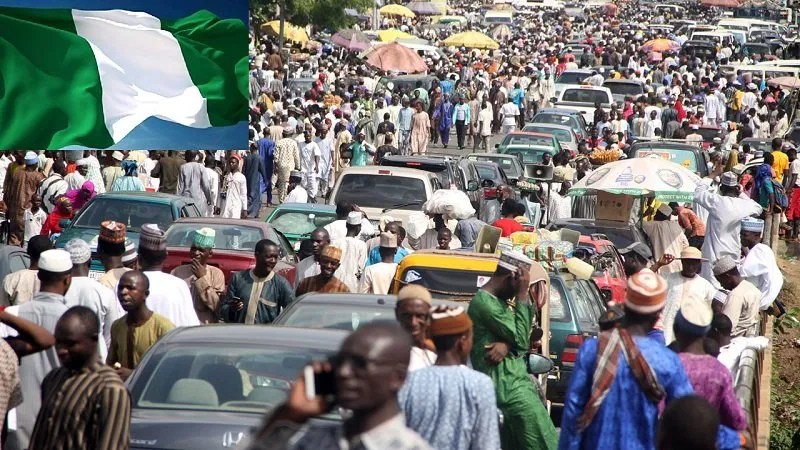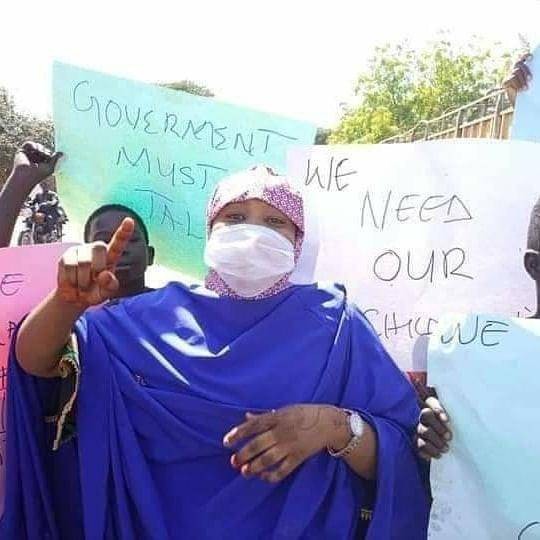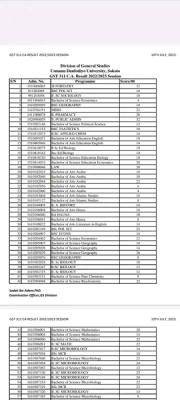
Nigeria is a West African country known as the Giant of Africa. It has a population of more than 206 million people and an area of 923,769 square kilometers (356,669 square miles) according to the National Population Commission (NPC) in the latest census carried out. It is Africa’s emerging economy and the world’s most populous black nation. Nigeria is not only well-known in Africa, but it is also a global force to be reckoned with. Its citizens are breaking new ground in various fields, including sports, art, literature, and science, thanks to Nigeria’s policy both internally and externally.
Nigeria’s economy makes it a popular destination for investors from within and outside the continent. As a result of its growing population, it is home to some of Africa’s largest cities. There are thirty-six (36) states and over two hundred and fifty (250) ethnic groups, the most common being Hausa, Yoruba and Igbo. Nigeria has over 500 languages spoken due to its diverse ethnic groups.
The remainder of this article examines the population of Nigeria’s 36 states, including the FCT.
Population of Nigeria According to NPC
1. Kano State (14,253,549 people)
Kano State is one of Nigeria’s 36 states and is located in the country’s northwestern region. It is Nigeria’s most populous state, with a population of over 14 million. Kano State has developed a diverse economy since its independence, establishing itself as a center for industry, agriculture, and Islamic banking centre.
2. Lagos State (12,772,884 people)
Lagos State is a state in southwest Nigeria. It is the second-most populous with over 12 million people inhabiting it. Lagos State is Nigeria’s major economic center. If it were a country, it would have the fifth-largest economy in Africa. Most Nigerian conglomerates and commercial banks have their headquarters in Lagos State.
3. Katsina State (9,300,382 people)
Katsina State is located in Nigeria’s northwestern geopolitical zone. Katsina State, with over 9 million residents, is the third-largest state in the country by population, despite ranking 17th out of 36 states in terms of area. The Hausa-Fulani are the state’s largest ethnic group, and Islam is the most widely practiced religion.
4. Kaduna (8,252,366 people)
Kaduna State is a northern Nigerian state. Kaduna State, Nigeria’s fourth-largest and third-most-populous state, is known as the “Centre of Learning” due to the presence of numerous critical educational institutions within the state, including Ahmadu Bello University. Kaduna State has been the site of violent ethnic and religious conflict in the modern era.
5. Bauchi State (7,540,663 people)
Bauchi State is a Nigerian state in the North-East geopolitical zone. Bauchi is the fifth-largest state in the region and the seventh most populous, with a population of over 7.5 million people.
6. Oyo State (7,512,855 people)
Oyo State is a southwestern Nigerian inland state. Oyo State is Nigeria’s sixth-most populous, with a projected population of 7.5 million. Most Oyo State residents are Yoruba, and the Yoruba language is still widely spoken.
7. Rivers State (7,034,973 people)
Rivers State, also known simply as Rivers, is a state in southern Nigeria’s Niger Delta region. Rivers State is Nigeria’s seventh most populous state, with a population of 7 million. Rivers State is a diverse state with many ethnic groups, the majority of which is Igbo, but there are also Ogoni and Ijaw.
8. Jigawa State (6,779,080 people)
Jigawa State is one of Nigeria’s 36 states and is located in the country’s northern region. Jigawa State is Nigeria’s eighth-most populous state, with a population of over 6.7 million people. The population of the state is predominantly Hausa and Fulani.
9. Niger State (6,220,617 people)
Niger is the largest state in Nigeria and is located in the North Central region. Niger state is divided into three political zones: A, B, and C. Minna is the state capital. It was established in 1976 when the then-Northwestern State was split into Niger State and Sokoto State.
10. Ogun State (5,945,275 people)
Ogun State is a southwestern Nigeria state. Ogun State has a population of over 5.9 million, making it Nigeria’s tenth most populous state.
11. Sokoto State (5,863,187 people)
Sokoto State is one of Nigeria’s 36 states, located in the country’s extreme northwest, on the border with the Republic of Niger. Sokoto is the capital and largest city. Sokoto is near the junction of the Sokoto and Rima rivers. It is home to more than 5.8 million people.
12. Benue State (5,741,815)
Benue State is one of Nigeria’s North Central states, with a population of approximately 5.7 million. Oranges, mangoes, sweet potatoes, cassava, soya bean, guinea corn, flax, yams, sesame, rice, groundnuts, and palm tree are among the popular crops grown in Benue.
13. Borno State (5,751,590 people)
Borno State is a Nigerian state in the North-East geopolitical zone. Borno is the second largest of the 36 states state in terms of land area, trailing only Niger State. Despite its small size, the state is the eleventh most populous, with an estimated population of 5.7 million people.
14. Anambra State (5,599,910 people)
Anambra State is a Nigerian state in the country’s southeastern region. The state has 4.1 million residents. Anambra is home to the first Nigerian vehicle manufacturer, Innoson, in Nnewi.
15. Zamfara State (5,317,793 people)
Zamfara is a state in Nigeria’s northwest. Gusau is the state capital of Zamfara. The population of Zamfara is 5.3 million people. Zamfara has a dense population of Hausa and Fulani people. Agriculture and gold mining are the state’s main occupations and sources of income.
16. Delta State (5,307,543 People)
Delta State is a Nigerian state in the South-South geopolitical zone of the country. The state is named after the Niger Delta, which covers a large portion of the state. The state’s population exceeds 5.3 million people. As one of the country’s leading oil-producing states, Delta State’s economy revolves around producing crude oil and natural gas.
17. Imo State (5,167,722 people)
Imo State, a state in the southeast of Nigeria is the third smallest state in terms of area, but it is the seventeenth most populous, with a population of over 5.1 million. The state economy relies heavily on agricultural production, particularly palm oil production, on which most citizens rely for cooking.
18. Kebbi State (5,001,610 people)
Kebbi State is located in northern part of Nigeria. Kebbi is the tenth largest state in Nigeria and the eighteenth most populous, with a population of approximately 5.1 million people.
Kebbi State’s economy is primarily based on fishing and agriculture, sorghum, groundnuts, millet, onion, and rice crops. Other important industries include trading, particularly in Birnin Kebbi, and camel, cattle, goat, and sheep herding.
19. Ondo State (4,969,707 people)
Ondo State is a state in southwest Nigeria. Ondo State is the 19th most populous state, with a population of over 4.9 million. The economy includes cocoa production, asphalt mining, and the state’s extensive coastline activities.
20. Akwa Ibom (4,780,581 people)
Akwa Ibom State is located in Nigeria’s geopolitical zone of South-South. Akwa Ibom is the 30th largest state in the area and the 20th most populous, with a population of over 4.7 million. As the country’s highest oil-producing state, Akwa Ibom State’s economy revolves around crude oil and natural gas production.
21. Adamawa State (4,536,948 people)
Adamawa State is located in Nigeria’s North-East geopolitical zone. Adamawa is the eighth largest state by area but the sixteenth least populous, with an estimated population of 4.5 million. Adamawa State’s economy is primarily based on livestock and crops such as cotton, groundnuts, millet, cassava, guinea corn, and yams.
22. Edo State (4,461,137 people)
Edo State is one of Nigeria’s 36 states in the country’s south. The state has the 22nd highest population (4,461,137 people) in Nigeria. Edo State is also Nigeria’s 22nd largest state by landmass. Benin City, the state capital and city, is Nigeria’s fourth-largest city and the center of the country’s rubber industry.
23. Plateau State (4,400,974 people)
Plateau state has the 23rd highest population in Nigeria, with over 4.4 million people. It is geographically unique in Nigeria because of its boundaries of elevated hills surrounding the Jos Plateau, its capital, and the entire plateau itself.
24. Enugu State (4,396,098 people)
Enugu State is in south-eastern part of Nigeria. Enugu is the 29th largest state in the area and the 24th most populous, with a population of over 4.3 million. Enugu State’s economy is based on trading, services, and agriculture, primarily yams, rice, cocoyam, oil palm, and cassava.
25. Osun State (4,237,396 people)
Osun State is located in southwestern Nigeria. Osun is the ninth smallest state in Nigeria and the 25th most populous, with a population of approximately 4.3 million people. Osun State’s economy is based mainly on agricultural cocoa, cassava, millet, maize, and yam crops. Other important industries include services, particularly in urban areas, artisanal mining, and livestock herding.
26. Cross River (4,175,020 people)
Cross River State is located in Nigeria’s geopolitical zone of South-South. Cross River is the nineteenth largest state by area and the 26th most populous, with a population of over 4.1 million people. Cross River State’s economy is partly based on crops such as cocoyam, rubber, oil palm, yam, cocoa, cashews, plantains, and fishing. Tourism in and around the wildlife reserves, the historic Ikom Monoliths site, Calabar Carnival, and Obudu Mountain Resort are important minor industries.
27. Kogi State (4,153,734 people)
Kogi State, a state in the North Central part of Nigeria is the thirteenth largest state in Nigeria and the 27th most populous, with a population of approximately 4.1 million people.
Kogi State’s economy is based mainly on agriculture, primarily coffee, cashew, groundnut, cocoa, oil palm, and yam crops. Other important industries include crude oil extraction and cattle, goat, and sheep herding.
28. Abia State (3,841,943 people)
Abia State is located in Nigeria’s South-East geopolitical zone. Abia is the 32nd largest state in the area and the 28th most populous, with a population of over 3.8 million people.
Abia State’s economy is based on the production of crude oil and natural gas, as well as agriculture, primarily yams, maize, taro, oil palm, and cassava. Manufacturing is an essential minor industry, particularly in and around Aba.
29. Gombe State (3,623,462 people)
Gombe State is a Nigerian state in the northeast. Gombe is the 21st largest state in Nigeria and the 29th most populous, with a population of approximately 3.6 million people.
Gombe State’s economy is based mainly on agriculture, primarily sorghum, groundnuts, millet, and tomatoes. Other important industries include services, particularly in Gombe, and livestock herding camels, cattle, goats, and sheep.
30. Yobe State (3,398,177 people)
Yobe is a state in northeastern Nigeria. It is primarily an agricultural state established on August 27, 1991. Yobe is Nigeria’s 30th most populous state, with a population of approximately 3.4 million people. While Yobe is primarily an agricultural state, it also has abundant mineral deposits, including gypsum and kaolin in Fune Local Government, and rich agricultural resources.
31. Ekiti State (3,350,401 people)
Ekiti State is a state in southwestern Nigeria and one of the country’s smallest. Ekiti is the 31st largest state in area and population, with a population of nearly 3.3 million. Ekiti State’s economy is partly based on agriculture, primarily yams, rice, cocoa, and cassava. Logging and tourism are essential minor industries.
32. Taraba State (3,331,885 people)
Taraba is a Nigerian state with 3.3 million people. It is Nigeria’s 32nd most populous state, trailing only Ekiti State. Agriculture is Taraba State’s primary occupation. Coffee, tea, groundnuts, and cotton are cash crops grown in the state. Maize, rice, sorghum, millet, cassava, and yam are also commercially cultivated.
33. Kwara State (3,259,613 people)
Kwara State is a Nigerian state in the west. Kwara is the ninth-largest in the area but the fifth least populous of Nigeria’s 36 states, with a population of approximately 3.2 million.
Kwara State’s economy is largely based on agriculture, primarily coffee, cotton, groundnut, cocoa, oil palm, and kola nut crops. Other important industries include services, particularly in the city of Ilorin, and cattle, goat, and sheep herding and ranching.
34. Ebonyi State (3,007,155)
Ebonyi State is located in Nigeria’s South-East geopolitical zone. Ebonyi, one of Nigeria’s smallest states, is the 33rd largest in the area and the 34th most populous, with a population of nearly 3 million people. Ebonyi State’s economy is based on agriculture, primarily yams, rice, oil palm, and cassava crops.
35.. The Federal Capital Territory (FCT) (2,702,443 people)
The Federal Capital Territory, also known as the FCT, was established by decree number 6 in 1976. It arose from the need to find a replacement for Lagos, the capital city, which had become congested and had little room for expansion. The area is home to over 2.7 million people, making it Nigeria’s fourth-least populous state.
36. Nasarawa State (2,632,239 people)
Nasarawa State is located in Nigeria’s North Central region. Nasarawa is Nigeria’s fifteenth largest state by area and second-least populous, with an estimated population of 2.6 million in 2016. Nasarawa State’s economy is largely based on agriculture, primarily sesame, soybean, groundnut, millet, maize, and yam crops.
37. Bayelsa State (2,394,725 people)
Bayelsa is a state in southern Nigeria, in the heart of the Niger Delta region. With a population of 2.3 million people, the state is the smallest by population and one of the smallest by area in Nigeria. Bayelsa State has one of Nigeria’s largest crude oil and natural gas reserves. As a result, the state’s petroleum production is substantial.
In summary, this article not only reveals the population of Nigeria’s 36 states and the FCT, but it also reveals that six of the top ten states with the largest population are in the North, while five of the top ten states with the smallest population are in the South. This article could provide additional insights by comparing state populations.




